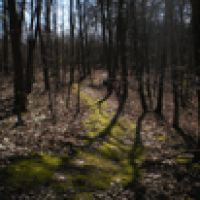Yu et al., 2016
Open science in practice: learning integrated modeling of coupled surface-subsurface flow processes from scratch
Yu Xuan; Christopher J. Duffy; Alain N. Rousseau; Gopal Bhatt; Álvaro Pardo Álvarez; Dominique Charron (2016)
Earth and Space Science, 3 (5): 190–206
-
Shale Hills, GRAD STUDENT
-
Shale Hills, INVESTIGATOR
-
Shale Hills, COLLABORATOR, GRAD STUDENT
Abstract
Integrated modeling of coupled surface-subsurface flow and ensuing role in diverse earth system processes is of current research interest to characterize nonlinear rainfall-runoff response, and also to understand land-surface energy balances, biogeochemical processes, geomorphological dynamics, etc. A growing number of complex models have been developed for water-related research, and many of these are made available to the Earth science community. However, relatively few resources have been made accessible to the potentially large group of Earth science and engineering users. New users have to invest an extraordinary effort to study the models. To provide a stimulating experience focusing on the learning curve of integrated modeling of coupled surface- subsurface flow, we describe use cases of an open-source model, the Penn State Integrated Hydrologic Model, PIHM. New users were guided through data processing and model application by reproducing a numerical benchmark problem and a real-world watershed simulation. Specifically, we document the PIHM application and its computational workflow to enable intuitive understanding of coupled surface-subsurface flow processes. In addition, we describe the user experience as important evidence of the significance of reusability. The interaction shows that documentation of data, software, and computational workflow in research papers is a promising method to foster open scientific collaboration and reuse. This study demonstrates how open science practice in research papers would promote the utility of open source software. Addressing such open science practice in publications would promote the utility of journal papers. Further popularization of such practice will require coordination among research communities, funding agencies and journals.
Citation
Yu Xuan; Christopher J. Duffy; Alain N. Rousseau; Gopal Bhatt; Álvaro Pardo Álvarez; Dominique Charron (2016): Open science in practice: learning integrated modeling of coupled surface-subsurface flow processes from scratch. Earth and Space Science, 3 (5): 190–206 . DOI: 10.1002/2015EA000155
 This Paper/Book acknowledges NSF CZO grant support.
This Paper/Book acknowledges NSF CZO grant support.
Explore Further




